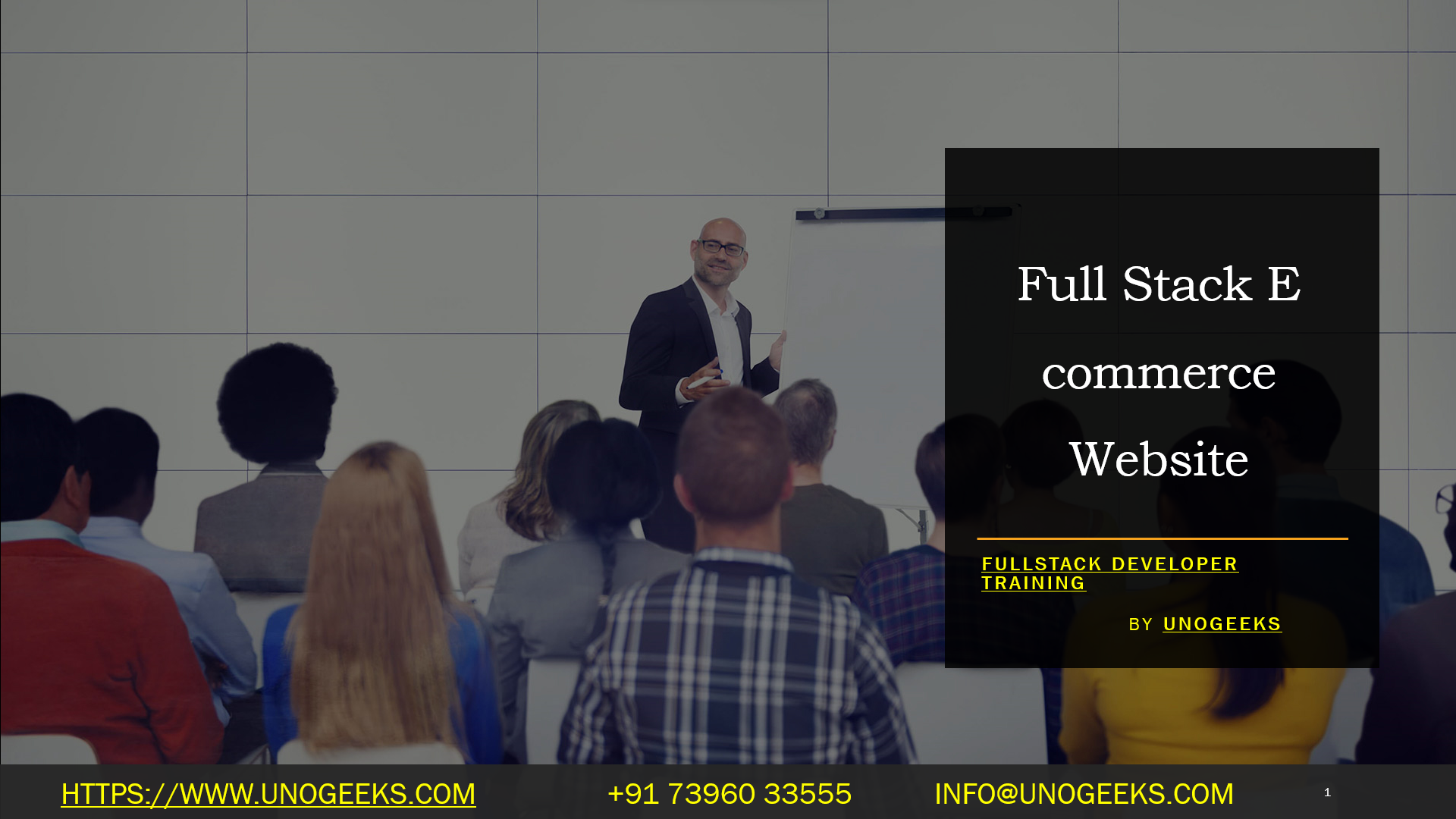Full Stack E commerce Website
Full Stack E commerce Website
Creating a Full Stack E-commerce website is a complex but rewarding project. Such a website includes both front-end (client-side) and back-end (server-side) components to provide a complete online shopping experience. Here’s an overview of the steps and technologies involved in building a Full Stack E-commerce website:
Front-End (Client-Side):
- React or Other Front-End Framework: Choose a front-end framework like React, Angular, or Vue.js to build the user interface. React is a popular choice for its component-based architecture.
- Responsive Design: Implement responsive design to ensure your website works well on various devices, including desktops, tablets, and mobile phones.
- User Authentication: Implement user registration and authentication features to allow customers to create accounts and sign in securely.
- Product Listings: Create pages to display product listings, including product images, descriptions, prices, and user reviews. Implement search and filtering options for better user experience.
- Shopping Cart: Develop a shopping cart system that allows users to add products, update quantities, and proceed to checkout.
- Checkout Process: Design and implement a smooth checkout process with features like address input, payment methods, and order review.
- Payment Integration: Integrate payment gateways like Stripe, PayPal, or others to handle online payments securely.
- Order History and Tracking: Allow customers to view their order history and track the status of their orders.
- User Reviews and Ratings: Implement a system for customers to leave reviews and ratings for products.
Back-End (Server-Side):
- Server-Side Technology: Choose a back-end technology stack, which can include Node.js with Express.js, Python with Django, Ruby with Ruby on Rails, or Java with Spring Boot.
- Database Management: Select a suitable database system (SQL or NoSQL) for storing product information, user data, and order history.
- API Development: Create RESTful or GraphQL APIs for the front-end to communicate with the back-end. Define endpoints for operations like product retrieval, user authentication, and order processing.
- Authentication and Authorization: Implement secure authentication and authorization mechanisms to protect customer data and ensure only authorized users can perform certain actions.
- Payment Handling: Develop server-side logic to handle payments securely, including payment gateway integrations and order processing.
- Inventory Management: Implement inventory management to track product availability and update stock levels as customers make purchases.
- Security: Apply security best practices to protect customer data, handle sensitive information securely, and prevent common security vulnerabilities.
Full Stack Developer Training Demo Day 1 Video:
Conclusion:
Unogeeks is the No.1 IT Training Institute for Full Stack Developer Training. Anyone Disagree? Please drop in a comment
You can check out our other latest blogs on Full Stack Developer Training here – Full Stack Developer Blogs
Please check out our Best In Class Full Stack Developer Training Details here – Full Stack Developer Training

———————————-
For Training inquiries:
Call/Whatsapp: +91 73960 33555
Mail us at: info@unogeeks.com
Our Website ➜ https://unogeeks.com
Follow us:
Instagram: https://www.instagram.com/unogeeks
Facebook:https://www.facebook.com/UnogeeksSoftwareTrainingInstitute
Twitter: https://twitter.com/unogeeks
